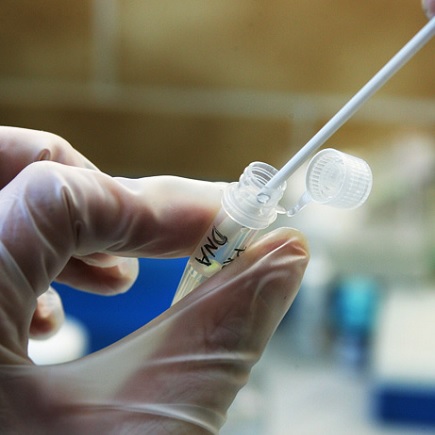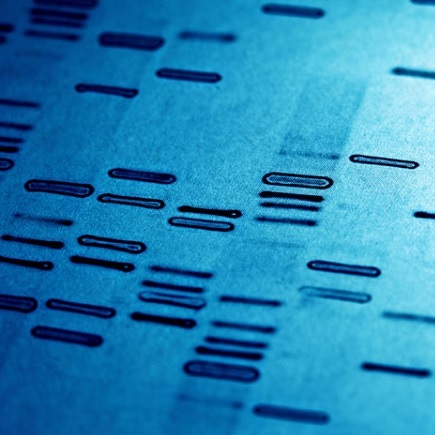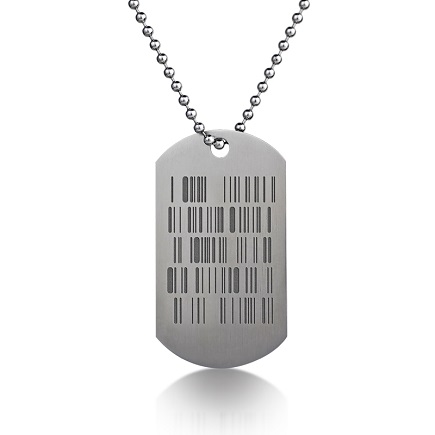
What is DNA analysis?
What is DNA analysis? Well let’s start with the basics – what is DNA? On the face of it, DNA might seem fairly complex, but you may be surprised to learn that, broken down, it’s made of just four building blocks, aka nucleotides: Adenine, cytosine, guanine, and thymine. Thymine and adenine attach as a pair, and guanine and cytosine attach as a pair. It’s the sequence of these pairs that acts as a set of instructions that makes all living things.
As humans, the vast majority of our DNA is exactly the same. Just 0.1% of each person’s genome differs from other individuals, but this makes all the difference in terms of our uniqueness and what we should evaluate for a DNA analysis. Apart from identical twins, no two people will ever have exactly the same DNA sequence. DNA analysis can therefore be used for medical diagnoses, criminal investigations, and in a host of other scenarios.
Home DNA tests are an increasingly popular use of DNA analysis and provide a way in which you can have your own DNA analysed to learn a variety of information about yourself.
If you’re wondering how to get a DNA test or want to explore the different options available, take a look at our A-Z list of tests.
What is DNA Analysis?
Let’s answer the question ‘What is DNA analysis?’ in a bit more detail. DNA analysis is the name given to the interpretation of genetic sequences, and can be used for a wide variety of purposes. It can be used to identify a species, but can also differentiate individuals within a species. Unsurprisingly, the DNA sequences of two different species vary more than those of two individuals from the same species. That said, a significant amount of DNA can still be shared between different species. For example, as humans we share about 50% of our DNA with bananas!
Perhaps the most recognisable examples of DNA analysis are the black and white images that contain bands (they look a bit similar to barcodes). Each of these bands represents a different fragment of DNA, and together they can act as a sort of ‘genetic fingerprint’ that can be used to compare different samples. Using this technique, a DNA sample from a crime scene can be quickly and easily matched to a suspect’s DNA, or a biological relationship can be proved or disproved between a person and their alleged father.
Discovery of DNA analysis
Before DNA analysis existed, crime solving focused largely on obtaining fingerprints from crime scenes. The problem with this was that criminals could easily avoid detection by simply wearing gloves or wiping down surfaces. DNA, however, can be collected from almost anywhere. It’s much harder for criminals to avoid leaving behind some kind of biological substance such as saliva, hair, sweat, skin, earwax, or mucus.
When DNA analysis first surfaced as a concept in the mid-1980s, these biological substances started to be put to use in solving crimes. An English geneticist called Alec Jeffreys developed a method of DNA analysis called DNA profiling, aka genetic fingerprinting, so that suspects could be matched to substances collected at crime scenes. Since then, the technology has improved considerably, resulting in DNA analysis becoming cheaper, more accessible and available for a range of official and consumer applications.
DNA Samples
The process of DNA analysis starts with DNA being extracted and purified from a biological sample. DNA can be found in several types of samples and extracted using a range different techniques – the technique chosen often depends on the size of the sample and the amount of DNA likely to be present.
In the vast majority of cases, when taking a home DNA test, you’ll be asked to provide a saliva sample or a cheek swab – a cheek swab is painless and takes just a few minutes. A few tests, most notably prenatal DNA tests, may require you to provide a small blood sample. Depending on the type of sample required, after you order the test, you’ll receive a kit in the post that contains the appropriate sample collection equipment, with instructions for securely returning it to the lab.
Types of DNA Analysis
Another way to look at the question ‘What is DNA analysis?’, is to examine the techniques involved. Regardless of the type of sample being analysed, once it has reached the lab and the DNA has been extracted, there are several methods of analysis that can be applied.
Restriction Fragment Length Polymorphism (RFLP)

RFLP is one of the oldest types of DNA analysis and it produces the black and white images that we mentioned earlier. Put simply, this technique involves cutting up DNA by targeting specific sequences. The sequences are then cut into strands of differing lengths, and separated by length using a special gel. This produces the black and white ‘genetic fingerprint’ image, with the longest stands showing as bands at one end and the shortest at the other. By comparing two images you can compare the lengths of the strands and easily see whether the sequences are the same or different. This analysis usually needs a sample that contains a relatively high quantity of clean and contamination-free DNA. It also takes a lot of time, due to the numerous steps involved in the process and has therefore largely been replaced by newer, quicker methods.
Short Tandem Repeat (STR) Analysis
One such technique is the analysis of Short Tandem Repeats (STRs). STRs are sections of DNA, between one and five nucleotides, that are repeated several times at specific points in our DNA sequence. Compared to RFLP, STR analysis can be done with DNA samples of much lower quality, which means that even trace amounts of DNA can be analysed.
The analysis itself involves examining the number of times that certain STR sequences are repeated. These repeats occur in the same locations in everyone’s DNA, but the amount of times that each STR repeats will differ between individuals. Those who are biologically related will possess STRs that are repeated the same or a similar number of times, and so this technique is the most commonly used when testing to prove or disprove biological relationships.
Single Nucleotide Polymorphism (SNP) Analysis
Single Nucleotide Polymorphism (SNP) analysis is the most recently developed DNA analysis technique. SNPs are also known as genetic variants and are points in our DNA where there are single nucleotide differences between individuals. These are examined by running a DNA sample across a specialised computer chip. These chips are designed to detect up to one million SNPs in your DNA but will usually report on around 100,000. Analysis of these genetic variants is the method usually used to determine someone’s genetic predisposition to disease, and is increasingly common in ancestry DNA testing. You can read more about how SNP analysis is used for ancestry testing in our article: How do I trace my ancestry?
Y DNA Analysis
The previous three techniques that we’ve talked about usually involve analysis of the DNA that’s inherited from both parents, known as autosomal DNA. However, these DNA analysis techniques can also be applied to Y DNA, that only males possess and which is exclusively passed from father to son.
This technique can be used to help solve sexual assault cases in which there are several male suspects. Investigators use Y DNA analysis to match samples taken from the victim with samples of suspects, to accurately find out who was involved. As the name indicates, the technique analyses multiple Y chromosome genetic markers, usually using STR or SNP analysis.
Y DNA analysis can also be utilised for tracing ancestral connections between males. It can provide information about ‘deep’ paternal ancestry, going back hundreds of thousands of years, as well as ancestral migratory paths. To find out more about this type of DNA analysis, take a look at our article: What is a Y DNA test?
Mitochondrial DNA (mtDNA) Analysis
In a similar way to Y DNA analysis, mitochondrial DNA analysis is concerned with the genetic information that we exclusively inherit from our mothers. However, unlike Y DNA which is only passed down from father to son, mitochondrial DNA is passed from mother to both son and daughter. It can be used to find out about your ‘deep’ maternal ancestry, which you can read more about in our article: What is a mitochondrial DNA test?
Although most of our DNA is found in the nuclei of our cells, mitochondrial DNA is found in mitochondria – structures in our cells that are separate from the nuclei. Interestingly, mitochondrial DNA testing is helpful for solving so-called ‘cold cases’, where the biological sample collected from a crime scene has degraded over time. This is because there are several mitochondria in each of our cells, instead of just one nucleus. Therefore, even if there is no nuclear DNA left, there is a chance that mitochondrial DNA remains intact and it can be analysed.
Uses of DNA analysis
We’ve mentioned a few examples where DNA analysis is important, but you may still be wondering ‘Why would I want my DNA to be analysed?’ We’ve covered some of the uses of DNA analysis below, but if you’d like to see a list of the different types of DNA test that you can buy online, head over to our A-Z of tests page for a full list.
Paternity and other relationship tests
DNA can be analysed to find out if a particular individual is biologically related to another person, for example, by proving or disproving the biological link between an alleged father and his child.
In the case of paternity testing, multiple alleged fathers can be tested if there are doubts. Paternity testing can also be conducted before a child is born, by taking a blood sample from the mother, isolating the baby’s DNA, and comparing it to that of the alleged father.
If you want to establish the paternity of a child, have a look at the paternity testing companies we list, or at the prenatal paternity testing companies we cover.
If you’re keen to establish a different type of biological relationship, you can also analyse DNA to prove or disprove maternity, siblingship, grandparentage, and many more, all of which you can find on our A-Z of DNA tests page.
Ancestry
Human populations have been studied for centuries, but DNA analysis has provided a new tool with which to do this. Scientists can analyse samples taken from living individuals and archaeological remains across the globe, to find out how far back human populations go and to explore different ethnicities. For example, in the 1980s, scientists used mitochondrial DNA analysis to conclude that all humans are blood-related to one woman, a woman who lived hundreds of thousands of years ago nicknamed ‘Mitochondrial Eve’. Research such as this has been and continues to be used to develop consumer ancestry DNA kits that allow people to explore their lineage and their ethnic mix. You can read more about how DNA analysis can provide you with a breakdown of your genetic ethnicity in our article: What is a DNA test for ethnicity?
Identification

As previously mentioned, DNA analysis is used to identify human remains in criminal investigations and for archaeological research. However, DNA analysis is also used when those in high-risk jobs or environments (e.g. oil rig workers or military personnel) wish to obtain their DNA profile. DNA profiles can be used to identify someone in the event of a fatal accident as it’s much more resilient than traditional forms of identification.
The US army now uses DNA profiles to supplement the traditional ‘dog tag’, and every new military recruit is required to provide saliva and blood samples. These can then be used to identify those killed while discharging duties. Outside the military however, DNA is rarely used for this purpose, as fingerprints and dental records are still preferred.
If you work in a high-risk job and are considering buying a test for DNA identification, we’ve listed the companies that offer DNA profiling. If you’d like to learn more about the subject, you can read our article: What is DNA profiling?
Predicting Disease
DNA can also be analysed to determine genetic links to diseases. Researchers study groups of people that suffer with a condition (e.g. Alzheimer’s Disease) to try to establish the genetic factors that lead to an increased risk of suffering with the illness. This has led to the development of online DNA tests that can identify your ‘genetic predisposition’ to a number of conditions.
Genetic predisposition tests are understandably more strictly regulated than other types of DNA analysis, sometimes requiring a doctor’s approval. It’s also important to point out that these types of test don’t diagnose a disease, but indicate whether you’re at a higher risk of developing one. Rheumatoid arthritis, breast cancer and type 2 diabetes are just a few examples of conditions that a genetic test can reveal an increased or decreased genetic predisposition to.
Please note, if you’re concerned about your health and you think a DNA test could help you diagnose a condition, or if you’re in good health but you’d like to know if you’ve inherited a disease that runs in your family, you should definitely speak to your doctor first.
On the other hand, if you’re in good health and you want to know about the conditions you may suffer with later in life, we’ve listed the companies that sell DNA tests for health purposes.
In both cases, we’d recommend you speak to a genetic counsellor before purchasing a test, and that you make sure you have access to a counsellor after you receive the results. This will ensure you understand the implications of a test, and that any distress can be minimised in the event of an unexpected result.
The future of DNA analysis
The first DNA analysis techniques needed large quantities of fairly high-quality DNA. However, newer procedures can produce DNA results with much smaller, lower quality samples, and in a much shorter time period. Techniques have also been developed to extract usable DNA from difficult-to-access or contaminated sources.
DNA analysis is still not fool-proof and there are instances when it doesn’t live up to expectations. Usually, DNA analysis provides insights or evidence, but it doesn’t always provide definitive answers. The interpretation of DNA results is still largely dependent on experts, but home DNA testing means that the information contained in your DNA is becoming more accessible and affordable all the time.

Dmitri Synogatch
20 September 2017
Awesome!